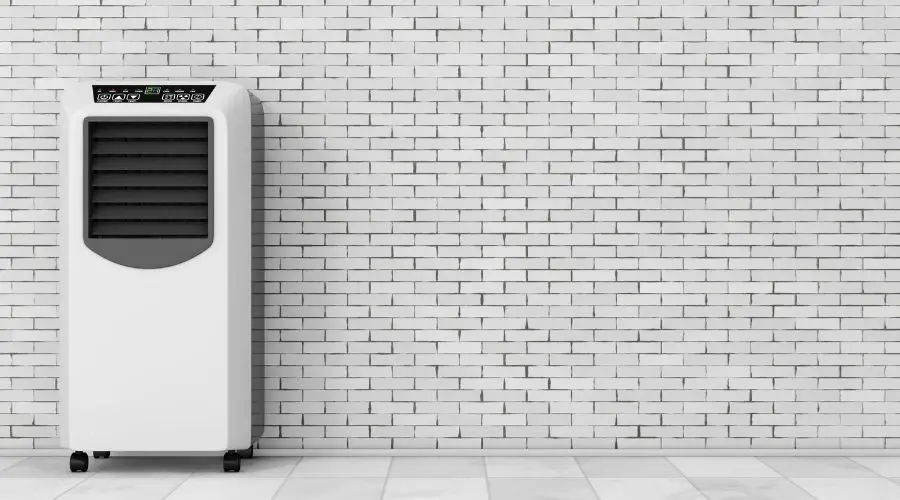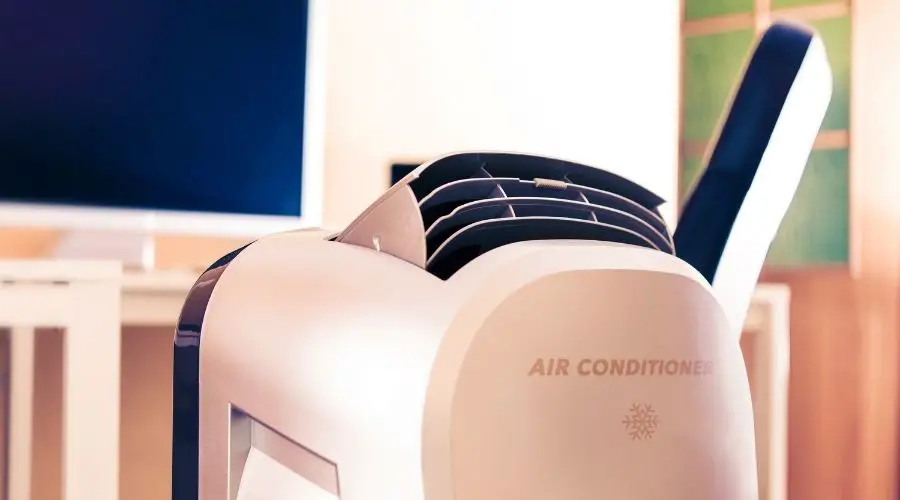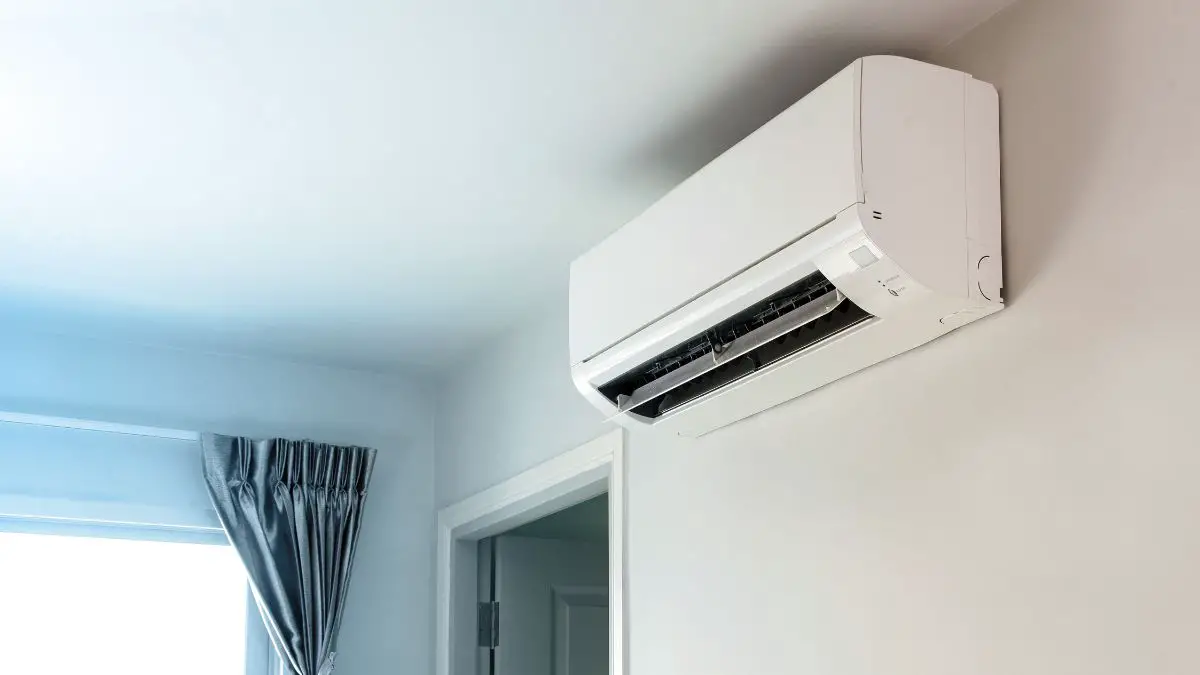
When it comes to the cool and comfortable air provided to us by air conditioners of every size, it becomes apparent that they all have one thing in common: ventilation. Now the best part about portable air conditioning units is that they are, well, mobile. Moving these guys from room to room with relative ease to make that environment comfortable is their main attraction.
However, portable air conditioners come with ventilation hoses that you are supposed to connect to an open window. What if there is a room, but you do not have an easily accessed window to your ventilation hoses from your portable air conditioner? Can they work effectively without a window?
In short, portable air conditioners can work without a ventilation hose attached to a window. Here are four ways how you can do so:
- Through a sliding glass door
- Vent your portable AC through a drop ceiling
- Set it up through a wall
- Through a window itself
As you continue to read the article, it will go more in-depth on properly ventilating your portable air conditioner if you do not have an easily accessible window.
Why Do Air Conditioners Need Ventilation?
Additional components are involved in the cooling process for outdoor units regarding air conditioners.
- The compressor
- Condenser coil
- The fan comprises the outdoor AC unit
Warm air is drawn in from the inside of your home by the unit.
The refrigerant absorbs the heat and moisture in the air and then passes it via the compressor coil. The fan delivers an ambient air stream to decrease the temperature as the refrigerant and air pass through the compressor. The heated air is subsequently evacuated from the unit, while the cold air is returned to the home.
Portable air conditioners must perform a little more effort to remove heat and moisture from space. They do not have the same power as a standard household AC unit. However, they are still efficient.
They also don’t do as much because they’re just meant for one room in a house, but they take a little more manual setup, especially if you’re using it in a space that isn’t entirely suitable for a portable unit.

Smaller Indoor Units
However, for smaller indoor units, this process is slightly different. While the result is essentially the same, there are some extra steps your unit will need to take depending on the make and model.
The procedure is the same: remove moisture, release heat, and restore cool air to the house. Of course, the essential idea here is to ensure that the hot air has somewhere to go other than back into the room.
For many air conditioners, this entails passing the heat through an exhaust hose placed through a window. When required and if you have the proper unit, there are ways to eliminate the hot air without opening a window.
How To Ventilate A Portable Air Conditioner Without A Window
When it comes to portable air conditioners, there are a few downsides. While they are mobile, they are not entirely able to be used anywhere.
Like all other air conditioners, they require to have some ventilation to work at 100% effectiveness. They can work without having a ventilation hose hooked up to a window, but we do not recommend this method.
Portable air conditioning units come with ventilation hoses for a reason. When an air conditioning unit is cooling down the air, it takes in air and recycles it through a process that cools down and compresses the air before releasing it back into the room.
As all appliances do, while it is working, it produces their heat, and some of the air it takes in is heated instead of cooled by this process. In which case, the hot air needs to go somewhere. If your portable air conditioning unit is not correctly ventilated or not ventilated, the excess heat made by the unit is pumped back into the room.
This causes the unit to work harder to get the entire room down to the temperature you set it. Not only this, but the added heat of stagnant hot air surrounds the general vicinity of the portable AC unit, leaving you with a weird hot spot in the rooms you are trying to cool down without a ventilation port.
Below we will talk about a few options you can choose if a window is not readily available, along with a quick snippet on how to install then with a window at the ready.
1. Setting Up A Portable Air Conditioner Vent With A Sliding Door
Due to how portable air conditioning units work, they, like all forms of controlled air, need some way of ventilating hot air somewhere, preferably outside and away from where you are trying to relax.
Besides using a window for ventilation, this method tends to be the easiest and most used option for ventilating hot air outside. This is because it works the same way as a window. The only downside is that most portable air conditioner models only come with a window adapter.
While some models come with a few different ventilation adapters for various ventilation options, most of the time, if they do not come with these, you can purchase the adapters you need online.
Setting up a ventilation system through a sliding door is super simple.
Essentially you are doing the same thing you would with a window but horizontal instead of vertical. Open the door about a foot wide and set up where you want the vent to sit. Then slowly close the door and eventually lock the ventilation exhaust in place.
2. Setting Up A Portable Air Conditioner Vent With Drop Ceilings
Another option you can opt into using is setting up a ventilation system through your drop ceiling if the area where you intend on using it has a drop ceiling.
At the same time, drop ceilings are not super popular in modern household buildings. They can be more common in older homes and buildings with offices and other commercial properties.
There are ways of setting up your ventilation exhaust to drop ceiling tiles in your home. However, the effort you will need to exert to do this is probably not worth it. A much easier option would be to purchase and install a ceiling vent kit, an insulated metal sheet that fits snugly into the ceiling.
Installing a ceiling vent kit is very easy. Here are the steps to doing so:
- Step 1: Find where you want to set up your portable air conditioning unit and remove one drop ceiling tile directly above it.
- Step 2: Take the ceiling vent kit’s metal insert and place it in that spot. Be sure to move any insulation gently away from the insert to guarantee a snug fit.
- Step 3: Once you have done that, take the ventilation hose with the kit and one of its clamps and connect it to the insulated hose and the duct connected to the metal insert—using a screwdriver to attach the two firmly.
- Step 4: Whenever that is completed, do the same to the portable air conditioner. Using the portable air conditioner’s exhaust hose comes with the unit and is placed inside the exhaust duct.
- Step 5: Take the other clamp and repeat the same process, using a screwdriver to connect the two firmly.
The duct that comes with the ceiling vent kit will be very insulated. This added insulation will keep the heat from the hot air and the hot air inside the hose. The added insulation and the pipe clamps that come with the kit will prevent hot air from leaking out of the two connection points.
3. Setting Up A Portable Air Conditioner Vent Through A Wall
This option will be the most drastic and should only be used if everything else fails and you need to vent the hot air outside. This will require you to drill a decent-sized hole through one of your walls. It entails setting up a permanent solution for an otherwise minor issue for an air conditioning system that is supposed to be portable, making it not mobile.
Consider how often you will use your portable air conditioner in the room you are considering cutting a hole in the wall for. If it is only for certain times of the day or every so often, consider just using the unit without a vent in these rooms. However, if you are using these rooms quite frequently and there are no other options for ventilation, then, by all means, proceed.
Making a ventilation hole in a wall can be pretty straightforward, depending on the home. While cutting and drilling through drywall and wood is relatively easy, doing the same through bricks or stone is not. Keep in mind what is on the outside of the wall before you start to cut and drill.
Not only is the type of wall an obstacle, but so is the inside of the wall. Nothing will be worse than starting to drill after inspecting the outside and inside wall to pierce a pipeline and cause a massive leak inside your wall.
Once you have figured out all you need to know about the exteriors of the walls and interior, you will need to get some tools for the job if you do not already have them. Depending on the wall kit you will be using, these items include:
- Electric drill
- Pencil, pen, or marker
- Tape measure
- 3½ inch or a 4-inch metal hole saw
- Screws and an appropriate drill head to match
- Exterior caulk
If you have a stone or brick wall, you will need to figure out a way to cut through this part of the wall if you want to install a wall vent for your portable air conditioning unit.
4. Setting Up A Portable Air Conditioner Vent With A Window
Portable air conditioners all typically come with a ventilation hose that you should use to connect to a window in the rooms where you intend on using it. The model of portable AC unit you purchase will come with instructions on installing this ventilation system in your windows.
This process typically entails opening your window about a foot to give you enough space to place the ventilation hose, and it’s encasing onto the bottom of your window frame. Then slowly close the window to lock this part of the gadget.
Final Thoughts
All in all, portable air conditioners do not need to be adequately ventilated to be used. However, the manufacturer companies do not recommend this. That being said, there are ways you can ventilate a portable air conditioner if you do not have a readily available window.
While using a sliding door is just as simple, you might need to buy a new part for your unit. Otherwise, you will need to do one of the much more complicated processes to ventilate your portable air conditioning unit.







